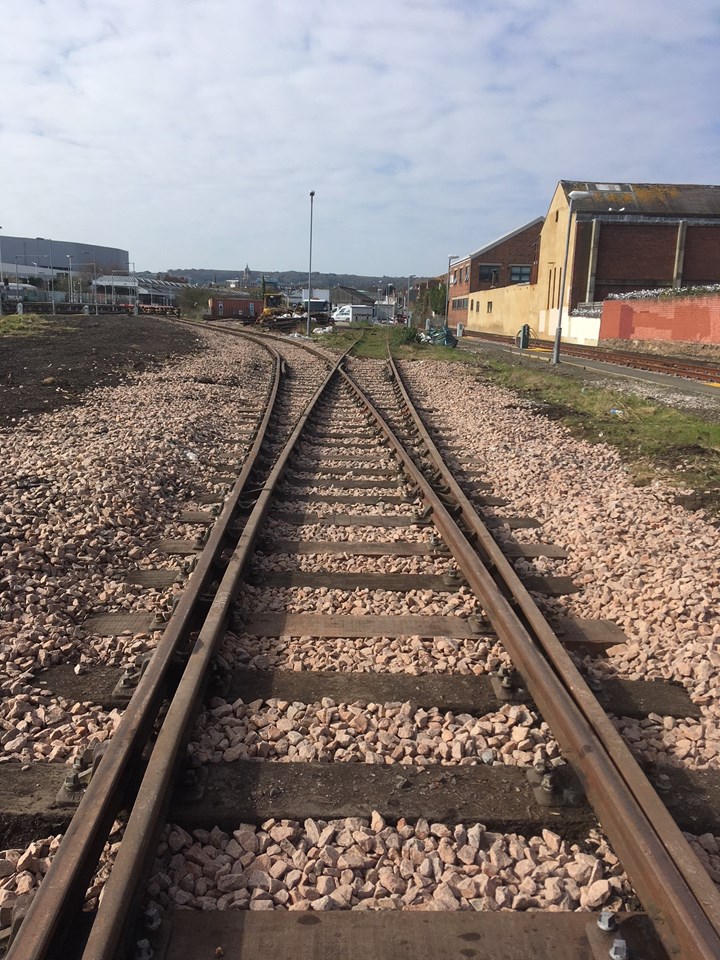Wednesday 15 May 2019
Siding with sustainability
- Region & Route:
- Southern
An overgrown railway siding at Eastbourne has been brought back into use by recycling track removed during the successful Three Bridges to Brighton blockade in February.
Part of the Thameslink Resilience Programme, the blockade involved remodelling the track layout at Balcombe Tunnel junction and the removal and replacement of track.
Usually, as part of Network Rail’s sustainability policy, materials that come out of upgrade sites are returned to a recycling centre at Whitemoor, Westbury, Cambridgeshire, where they are re-graded and offered back for use on the network.
While delivering the upgrade at Balcombe, the team noticed that although the track was no longer suitable for use there, it was of a high enough quality to potentially be re-used somewhere else, without regrading or reconditioning.
Andrew Wood, Network Rail’s senior commercial scheme sponsor, South East Route said: “When renewing the switches and crossings, we usually need to renew the plain line leading to those switches, but when we surveyed the plain line track at Balcombe Tunnel Junction we realised it was in sufficiently good enough condition to re-use elsewhere in a siding rather than recycle.”
Limited access to stabling points for On Track Machines (OTMs) in the Sussex coastal area has been a long-standing challenge for Network Rail’s Supply Chain Operations team. Eastbourne provides an ideal location for stabling points across the south coast.
The track was deemed as suitable for use on sidings which removed the need to transport it to Westbury, carry out work on it and then return it to the south coast.
Andrew Ripley, senior project operations manager (Southern and Anglia) said: “This is a great win-win for us, from an operational perspective, not only do we reduce the fuel costs for the OTMs by storing them in Eastbourne, but we also increase the potential working time window for work in the future by having better machine availability.”
“Environmentally speaking, less fuel used means lower carbon emissions and reusing the Balcombe track saves on the cost of procuring new track for the Eastbourne stable. It wasn’t of the standard required for a mainline, but it was fine for sidings where trains travel at low speed. The Balcombe track is probably good for another 50 years.”
Over time, the improved access to machinery will lead to better track maintenance being carried out more quickly. Good track maintenance means fewer passenger delays and a better passenger experience.
As part of the re-installation of the sidings work was carried out to remove overgrown vegetation and to tidy up some walking routes.
Contact information
Passengers / community members
Network Rail national helpline
03457 11 41 41
Latest travel advice
Please visit National Rail Enquiries
Journalists
Tony Henderson
tony.henderson@networkrail.co.uk
About Network Rail
We own, operate and develop Britain's railway infrastructure; that's 20,000 miles of track, 30,000 bridges, tunnels and viaducts and the thousands of signals, level crossings and stations. We run 20 of the UK's largest stations while all the others, over 2,500, are run by the country's train operating companies.
Usually, there are almost five million journeys made in the UK and over 600 freight trains run on the network. People depend on Britain's railway for their daily commute, to visit friends and loved ones and to get them home safe every day. Our role is to deliver a safe and reliable railway, so we carefully manage and deliver thousands of projects every year that form part of the multi-billion pound Railway Upgrade Plan, to grow and expand the nation's railway network to respond to the tremendous growth and demand the railway has experienced - a doubling of passenger journeys over the past 20 years.
Follow us on Twitter: @networkrail
Visit our online newsroom: www.networkrailmediacentre.co.uk

